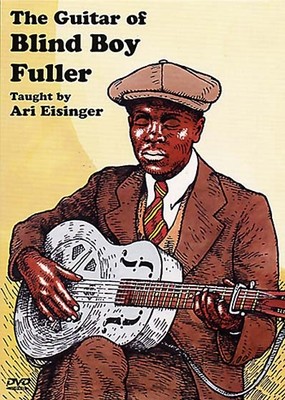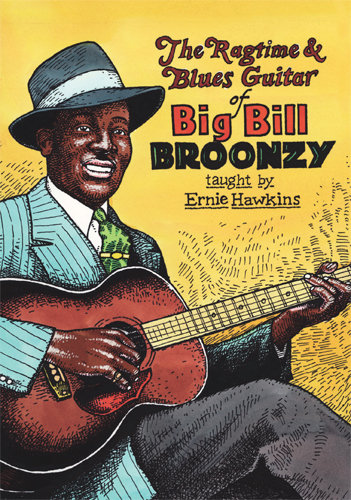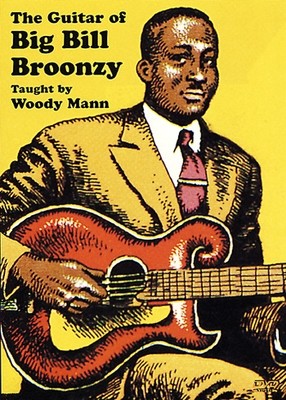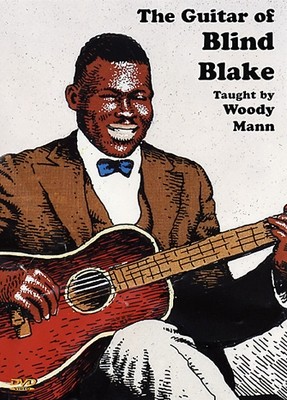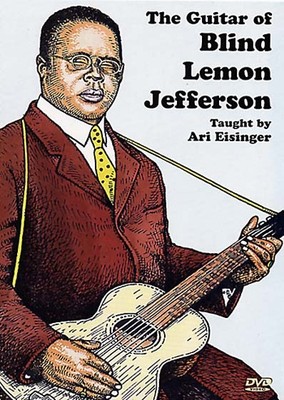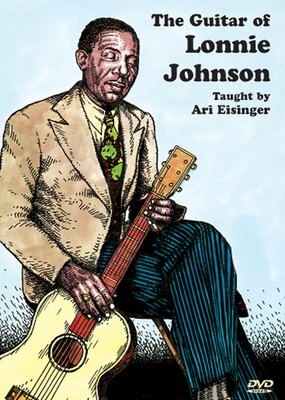
Ragtime and Blues Guitar of Big Bill Broonzy (2 DVD Set) - taught by Ernie Hawkins
“A record by Big Bill Broonzy was the first Blues record I purchased. I loved his voice, his guitar playing and his handsome face.... He was my first Blues crush.” – Peter Townshend
"Big Bill Broonzy became like a role model for me, in terms of how to play the acoustic guitar.” – Eric Clapton"
“Without this man, I don't think I would have done what I did.” – Ray Davies
Big Bill Broonzy (June 26, 1903 – August 15, 1958) was an incredible American blues singer, songwriter and guitarist. His career began in the 1920s when he played country blues to mostly black audiences. Through the 1930s and 1940s he successfully navigated a transition in style to a more urban blues sound popular with white audiences. In the 1950s a return to his traditional folk-blues roots made him one of the leading figures of the emerging American folk music revival and an international star. He was one of the first bluesmen to tour in Europe and his performances and records influenced folk guitars from John Renbourn, Martin Carthy, Stefan Grossman and Davey Graham to rock guitarists as Eric Clapton (who recorded several Big Bill tunes on his Unplugged CD) to Ron Wood of the Rolling Stones who said: “Big Bill’s Guitar Shuffle was one of the first tracks I learnt to play, but even to this day I can't play it exactly right.”
In this double DVD lesson of over 4 hours of instruction, Ernie Hawkins teaches ten of Big Bill’s greatest guitar solos and arrangements. Each tune is taught phrase by phrase and then uses the split-screen so you can carefully study what each hand is doing. Detailed tab/music booklets are included as PDF files on both DVDs. Also included is rare footage of Big Bill as well as bonus audio tracks of Big Bill’s recordings of the tunes on this lesson.
Titles include: Guitar Shuffle, Oh Yes, Glory of Love, Banker’s Blues, Stovepipe Stomp, Shuffle Rag, St. Louis Blues, Shelby County Blues, Slow Blues, Bill Bailey
247 minutes • Level 3 • Detailed tab/music PDF file on each DVD
Review: It's in the thunk! The thump! and thwack! too. That's where the marvel of Big Bill Broonzy's guitar lies. Because the key to cruising like Broonzy is knowing how to convert a locomotive into a bassline with the right hand while the left tumbles out a sparkling waterfall. So marvelous was his technical brilliance - first etched into record in the 1920's -that Muddy knelt before him with a homage album. Clapton's gushed over him for decades. And don't get Rolling Stone Ronnie Wood testifying about the power of “Guitar Shuffle:” unless you've got spare time. Also within that fan club is Ernie Hawkins, the perfect man for this job. His command over every inch of The Ragtime & Blues Guitar Of Big Bill Broonzy is passionate enough to enthuse that Broonzy's style paves the “road to happiness.” Now that's the fired-up guy you want teaching all the runs and rhythms, licks and tricks behind “Stovepipe Stomp,” that “Guitar Shuffle,” “Shelby County Blues,” plus seven more. (Word of caution: “Glory Of Love” is an ear worm, happy to bore its bouncy melody and singsong refrain into heads without intent to leave anytime soon.) The Big Bill frenzy sprawls over two DVDs with four hours of detailed instruction, Broonzy's original audio tracks and a mini film fest of assorted 1950's performances climaxing in Low Light & Blue Smoke, 16 minutes of vintage noir lurking in a Belgian grotto. – Dennis Rozanski/Blues Rag
Review: Stefan Grossman began publishing transcriptions of country blues guitarists in the late 1960s, and his work continues with recent videos by himself, John Miller, Tom Feldman, and here, Ernie Hawkins. In this four-hour lesson, Hawkins teaches the guitar parts from ten recorded performances by blues giant Big Bill Broonzy, whose musical career spanned the middle 1920s until his death in 1957. Hawkins focuses on the raggy blues style that characterizes Broonzy's earliest recordings. Medium tempos, damped monotonic bass and a mix of bouncy chords, bent notes, and double stops in the treble are key elements of this good-time music. As for the spirit of Broonzy's music, think of a Depression-era Chicago house rent party and you won't be far off the mark. "Guitar Shuffle" in C is the first tune presented, bearing a strong similarity to Blind Lemon Jefferson's "Hot Dogs" (both, not incidentally, sharing the chord sequence and rhythmic structure of the Texas fiddle tune, "Beaumont Rag"). "Oh Yes" in A, follows, resembling "Guitar Shuffle" in the first section, but adding a popular key modulation and turnaround in the second part. "Bill Bailey" and "Glory of Love" both come from Broonzy's later years, although for both arrangements he returned to the happy sounding ragtime blues technique that dominated his earlier playing. "Shuffle Rag", "St. Louis Blues" and "Slow Blues" showcase Bill's facility playing 12-bar blues in the key of C. More blues in the keys of E, A, and D round out the lesson. For each tune, Hawkins follows the typical sequence of Grossman's instructional videos, i.e., performance, teaching the tune, followed by a slow run-through utilizing split screens to show the right and left hands. Hawkins' does a fine job presenting these tunes, but the video segments of Broonzy add a lot of value to this package. These include performances of "Backwater Blues", "Troublin' Mind" (i.e., Troubled in Mind), Yannick Bruynoghe's award-winning short, "Low Lights and Blue Smoke: Big Bill Blues" filmed in Brussels in 1955, and several brief clips shot by Pete Seeger in July 1957 at the Circle Pines Center in Cloverdale, Michigan (including one tune performed with a flatpick). Seeger's work is the last known video of Broonzy, who died several weeks afterward. The discs and download option also include sound files of Broonzy's original recordings of each tune covered in the lesson. The bonus audio and video illustrate Broonzy's mastery of pacing and dynamics and are essential to understanding him as a solo performer. Intermediate fingerstyle guitarists and fans of early blues will find much to study and enjoy here. Each tune is transcribed in a booklet included with either format. – Patrick Ragains/Minor 7th
